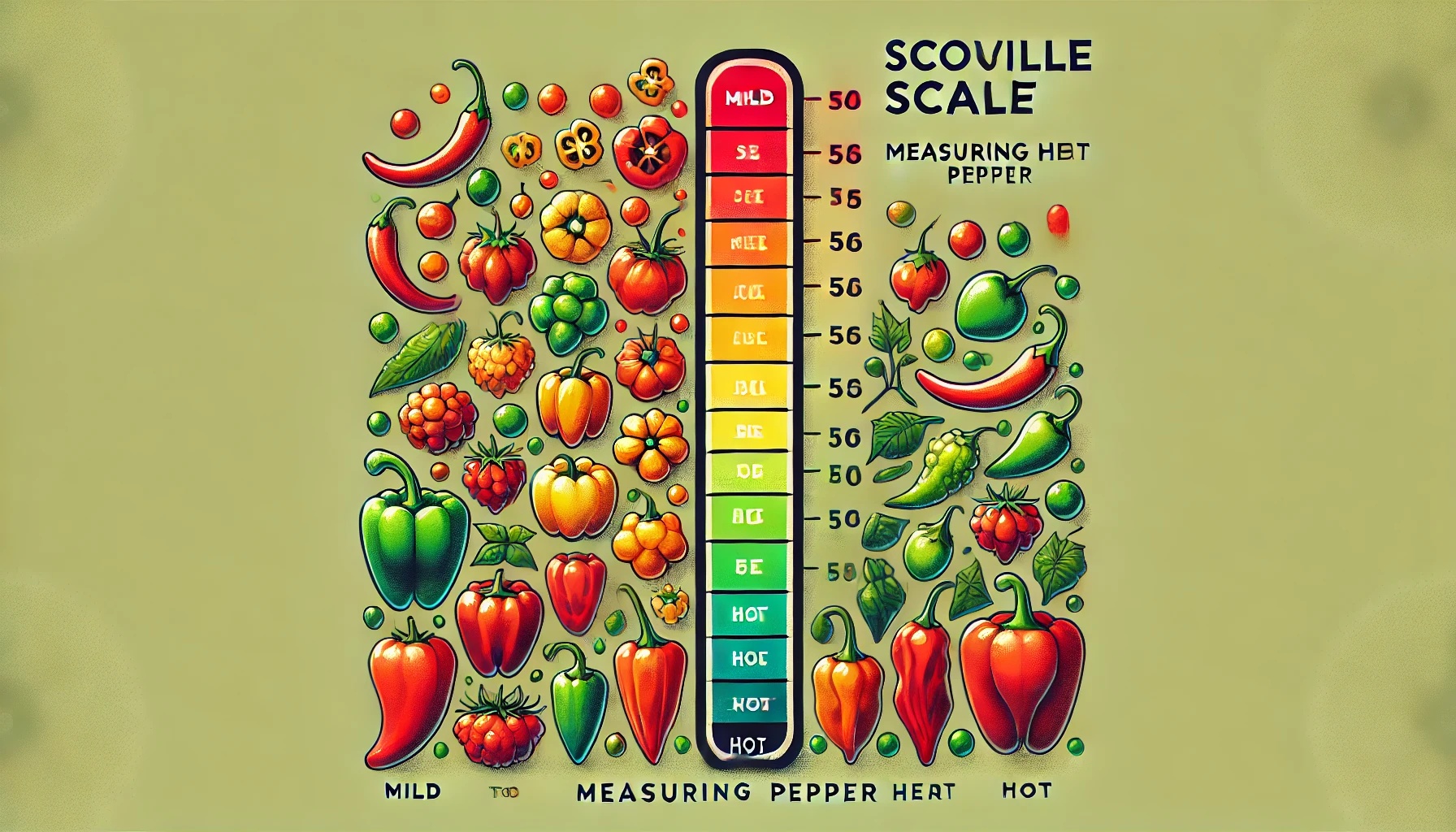Have you ever bitten into a chili pepper and felt your mouth catch fire? That sensation of burning heat is due to capsaicin, the compound responsible for the spiciness in peppers. But how do we measure this heat? Enter the Scoville Scale, a tool that ranks peppers based on their spiciness. This article will take you through the origins of the Scoville Scale, how it works, and some examples of peppers along the scale.
The Origins of the Scoville Scale
The Scoville Scale was created in 1912 by Wilbur Scoville, a pharmacologist who sought to measure the heat of peppers in a systematic way. Scoville developed a method called the Scoville Organoleptic Test. This test involved dissolving a dried pepper in alcohol to extract its capsaicinoids, then diluting the solution in sugar water. A panel of tasters would then sip the solution, and the level of dilution at which the heat was no longer detectable was used to determine the Scoville Heat Units (SHU).
How the Scoville Scale Works
The Scoville Scale measures the concentration of capsaicinoids, specifically capsaicin, in a pepper. The higher the concentration, the hotter the pepper, and the higher its SHU rating. For example, a bell pepper, which contains no capsaicin, has a Scoville rating of 0, while a Carolina Reaper, one of the hottest peppers in the world, can reach over 2 million SHU.
Modern Methods
While the original Scoville Organoleptic Test relied on human taste testers, modern methods use high-performance liquid chromatography (HPLC). This technique measures the precise amount of capsaicin and other capsaicinoids in a pepper, providing a more accurate and objective measurement of heat. The results are then converted to Scoville Heat Units.
Examples of Peppers on the Scoville Scale
To give you a better understanding of the Scoville Scale, let’s look at some examples of peppers and their SHU ratings:
1. Bell Pepper (0 SHU)
Bell peppers are sweet and contain no capsaicin, making them a staple in salads and stir-fries without adding any heat.
2. Poblano Pepper (1,000 – 2,000 SHU)
Poblanos are mild peppers often used in Mexican cuisine. They have a slight kick but are generally considered mild.
3. Jalapeño (2,500 – 8,000 SHU)
Jalapeños are a popular pepper used in salsas, nachos, and many other dishes. They provide a noticeable but manageable heat.
4. Serrano Pepper (10,000 – 23,000 SHU)
Serranos are hotter than jalapeños and are commonly used in sauces and salsas. They pack a good punch of heat.
5. Cayenne Pepper (30,000 – 50,000 SHU)
Cayenne peppers are often dried and ground into a powder, used to spice up dishes. They are significantly hotter than serranos.
6. Habanero Pepper (100,000 – 350,000 SHU)
Habaneros are very hot and are used sparingly in cooking. They have a fruity flavor that complements their heat.
7. Ghost Pepper (Bhut Jolokia) (855,000 – 1,041,427 SHU)
Ghost peppers were once considered the hottest pepper in the world. They are extremely hot and should be handled with care.
8. Carolina Reaper (1,400,000 – 2,200,000 SHU)
The Carolina Reaper holds the Guinness World Record for the hottest pepper. It is not for the faint of heart and is used primarily for extreme heat enthusiasts and novelty products.
The Science Behind Pepper Heat
Capsaicin, the compound that makes peppers hot, binds to receptors in the mouth and throat that are responsible for sensing heat. This binding triggers a sensation of burning, which the brain interprets as pain. The body responds by releasing endorphins, which can create a feeling of euphoria known as a “pepper high.”
Benefits of Spicy Peppers
Despite the pain, many people enjoy the heat of peppers. Spicy peppers have several health benefits, including:
- Metabolism Boost: Capsaicin can increase metabolism and promote weight loss.
- Pain Relief: Capsaicin is used in topical creams to relieve pain from conditions like arthritis.
- Heart Health: Some studies suggest that capsaicin can improve heart health by reducing cholesterol and improving circulation.
Handling and Cooking with Hot Peppers
When cooking with hot peppers, it’s essential to handle them carefully. Here are some tips:
- Wear Gloves: Capsaicin can irritate the skin, so wearing gloves can protect your hands.
- Avoid Touching Your Face: Touching your eyes or face after handling hot peppers can cause severe irritation.
- Use Dairy to Cool the Heat: If you eat something too spicy, dairy products like milk, yogurt, or cheese can help neutralize the heat.
Conclusion
The Scoville Scale is a fascinating tool that measures the heat of peppers, from the mild bell pepper to the scorching Carolina Reaper. Understanding this scale can help you navigate the world of peppers, whether you’re a casual cook or a spicy food enthusiast. By appreciating the science behind pepper heat and the benefits they offer, you can better enjoy the diverse and flavorful world of peppers. So next time you bite into a chili, remember Wilbur Scoville and the scale that helps us measure the fiery heat of these remarkable fruits.




Pingback: Top 10 Spiciest Peppers in the World - Backyard Botanist
Pingback: The Science Behind Pepper Heat: Why Do Peppers Burn? - Backyard Botanist